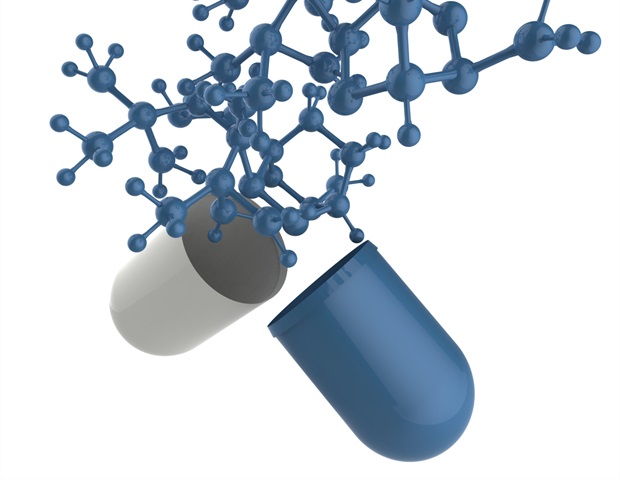Rapidly identifying certain bacteria allows antibiotic treatments to be optimized. A team from the University of Zurich, supported by the SNSF, has developed molecules to detect and capture certain species.
The discovery of antibiotics revolutionized medicine in the 20th century, saving countless lives. However, the emergence of resistant bacteria has quickly become a new challenge. One key factor in tackling this issue is being able to pinpoint the bacteria causing an infection. This enables healthcare providers to use targeted and effective antibiotics and reduce the risk of new forms of resistance development.
With the support of the Swiss National Science Foundation (SNSF), scientists have developed molecules to detect certain bacteria quicker than before. Their research has recently been published in the journal Communications Biology. These molecules pave the way for accelerated medical diagnostic methods, particularly – but not only – in cases of bloodstream infections. “The developed molecules are already being used in a partnership with the Zurich start-up Rqmicro, which provides tools to monitor water quality,” says Markus Seeger, the biochemist who led this study at the University of Zurich’s Institute of Medical Microbiology.
Speeding up certain diagnoses
“In the race between the evolution of resistant bacteria and the development of new antibiotics, we don’t stand a chance. Bacteria have been at war with viruses for millions of years and are used to evolving to escape new dangers,” says the researcher. The only solution we currently have is to use antibiotics efficiently and sparingly. This prevents bacteria from being constantly exposed to residues or traces of antibiotics in their environment, so that when antibiotics are used for treatment, they are still effective at killing the bacteria. This strategy requires medical diagnoses that are as fast and accurate as possible. However, traditional identification methods take time. They involve collecting bacteria from the patient and then growing them until there are enough to carry out detailed analyses. The growth phase can take up to 12 hours for some species, sometimes longer. The analyses then take another two hours. Markus Seeger and his team are looking to speed up this process: “Our idea is to detect certain bacteria more quickly, even in small numbers, by giving them specific colours. We aim to capture them directly in the blood to increase their density and analyse them more quickly”. This approach does not deliver a conclusive diagnosis, but it means we can confirm more quickly than using traditional methods whether certain bacteria are present. This saves valuable time, especially in cases of bloodstream infections when waiting one or two days for detailed analyses may not be feasible.
Markus Seeger’s team concentrated on detecting the bacteria Escherichia coli (E. coli), commonly linked to urinary tract infections and bloodstream infections. In addition, resistance rates for this species of bacteria increased in Switzerland between 2004 and 2024, rising fourfold for certain classes of antibiotics. “Knowing whether an infection involves Escherichia coli or something else is already a good basis on which to make an initial decision about which treatment to administer,” says the biochemist. In fact, the tools developed by his team would save around six hours of the twelve needed for traditional diagnostics.
Penetrating the “jungle of sugars”
Markus Seeger and his team had to solve two problems to capture Escherichia coli. On the one hand, they needed to find the right bait, i.e. a specific element common to all Escherichia coli bacteria. On the other hand, the researcher admits that he “underestimated the complexity of the jungle of sugars acting as a barrier around the bacteria.” This jungle is so dense that few molecules can penetrate it.
As a hook, the scientists opted for miniature antibodies, known as nanobodies. Their small size allows them to pass easily between the sugar branches. They are also more stable than conventional antibodies, meaning they remain functional for longer periods at room temperature. This is a key element to obtain detection tools that can be transported and stored without having to worry about cold chains. The team searched an international database and a register of bacteria detected in Swiss hospitals. By analysing the genome of the recorded Escherichia coli-type bacteria, a protein was identified – OmpA – a specific form of which is found only in Escherichia coli. The group subsequently developed nanobodies capable of detecting this version of OmpA in a targeted and effective way in over 90 percent of species members. The nanobodies function like a hook that specifically captures Escherichia coli bacteria.
This solution means that bacteria can be coloured but not captured. As Markus Seeger explains, “To detect Escherichia coli, this works well. We can attach tiny colourant molecules to the nanobodies without significantly increasing their size. However, to capture the bacteria, we use larger magnetic beads, and they can’t penetrate the jungle of sugars that surrounds the bacteria.” The scientists, therefore, created a sort of fishing rod for their detection kit – a molecular thread that was developed to connect the nanobodies (the hook) to the magnetic beads blocked by the sugars (the handle).
We now have a tool to detect and capture Escherichia coli. I hope we can successfully implement it in clinical diagnostics. We’re already using it for environmental analyses.”
Markus Seeger, biochemist
Source:
Swiss National Science Foundation (SNSF)
Journal reference:
Sorgenfrei, M., et al. (2025). Rapid detection and capture of clinical Escherichia coli strains mediated by OmpA-targeting nanobodies. Communications Biology. doi.org/10.1038/s42003-025-08345-9.
